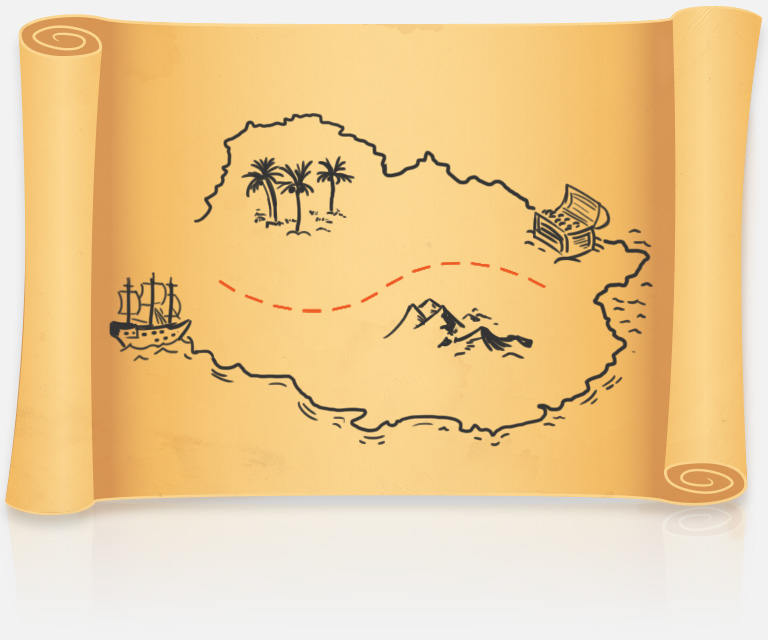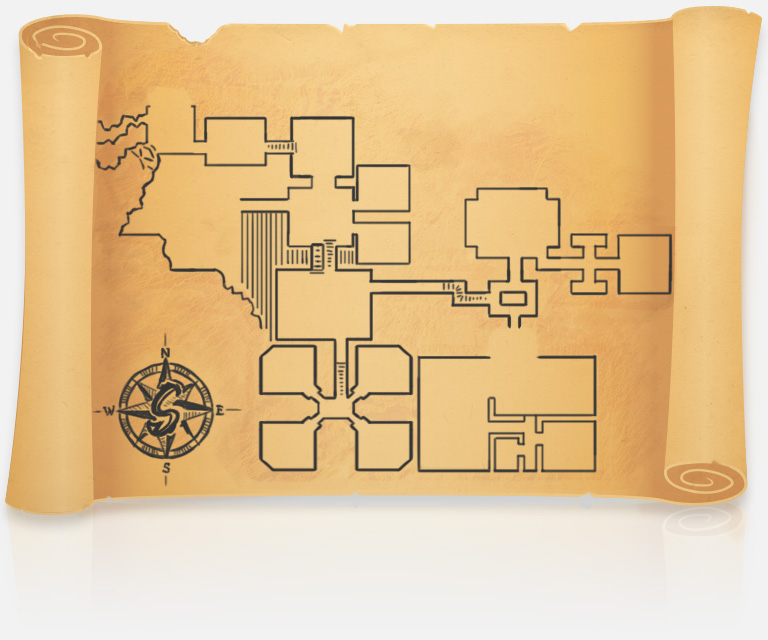
Starting request
Results delivered
Shattering myths
Knowing the creative process
It is not uncommon to assume that creatives (be they architects, designers or illustrators) start working directly on what, after a few hours, will be the final result; moving along a simple path from point A to point B.
In reality
The journey is usually much more complex
The very act of designing is a back-and-forth process in which alternatives are constantly being evaluated and getting discarded.
But before starting to create, there are several previous phases (research, information analysis, problem identification and objective planning).

Starting request
Results delivered
Final phases
Consensus
Choice of course
Program does not respond!
Data collection
Analysis
Discarded option
Rejected option
Divine Inspiration
New approach
Multimedia adaptation
Hard disk fails
back to top
Progress saved
Internet Explorer
Obsolete compatibility!
Transcription to web code
Last-minute modifications
Client's Briefing
Company, brand and/or product information
It is crucial for the designer to have as much information about the client as is relevant: company objectives and values, segmentation of current clients, market positioning and niche, etc., in order to start working.
Project circumstances
What the project in question is about, what it is intended to achieve, what is the target audience to be reached, and what kind of budget is intended to be allocated to its success.
Without this information, we would be working blind and it would be difficult to make any kind of decision, from the media on which it would be convenient to print a graphic, to the type of material, technique to be used, dimensions and more.
Interpretation and analysis
Audit of the use of design
In the case of an existing company or brand, study the way in which it makes use of visual communication and brand identity.
Understanding needs
Analysis of the circumstances and understanding of the needs of both the client and the end consumer.
Identification of the problem
Problem” should be understood as any situation that makes it difficult to achieve some goal.
It may be obvious in some circumstances, but not always what you think you need is really the best approach to achieve your objectives. It is therefore important to analyze and identify the problem before attempting to resolve any situation.
Planning and strategy
Determination of objectives
From the information and conclusions resulting from the previous phase, all the objectives of the project are established and the different ways of approaching them are developed.
Compilation of references
Studying trends and possibilities is crucial. These will be archived as references along with free commercial images that may be useful for the project.
Brainstorming and sketching
Every idea, every possible approach, every word, synonym and phrase that can be used in the communication is recorded; be it a brand name, slogan/tagline or broad wording.
Likewise, every visual projection is sketched on paper to be digitized later; whether it is logo sketches or mock-ups and editorial structures for apps, websites or brochures.
Model development
From sketch to digital model
It is only at this stage that we begin to digitize sketches and ideas. This is a more complex process than it seems, since when formalizing a mere idea a series of unforeseen complications arise: technical, aesthetic, contrasts, legibility… or simply what, in theory, promised a great future, in practice leaves much to be desired and must be discarded.
Between the artist's head and the canvas there are not centimeters, but kilometers.
Range of options
Although many ideas are discarded when they do not work as we thought they would, fortunately they are not the only ones, because with each change and each possibility, new combinations and alternatives arise and are developed at the same time.
The design process consists of generating more and more variants that, in turn, will give rise to other alternatives. This phase is an incessant iteration of generation and discarding; options that emerge and others that are left behind, until eventually a few equally good finalists are reached.
Presentation and feedback
Options presented
It would be completely overwhelming, unnecessary and very impractical to present the client with all the options generated, when the designer is the specialist in differentiating and recognizing the pros and cons of each version.
But that does not mean that there is no option for the client, on the contrary; he will be presented with all the relevant paths to be addressed that are developed at the same level of quality and functionality. And each decision taken will be argued why they are what they are, in which aspect they stand out and in which aspect they falter.
Client's wisdom
As already mentioned in the second point on the home page, the success of the project depends on the partnership between the designer and the client, in which each one does his part according to his expertise in the field.
For the designer, all options may be equally effective, but there is no one better than the client to highlight the particularities of the field in question. Therefore, the two of them will determine which will be the best option.
Selection and final polishing
Polishing of the selected option
Review and correction of details to perfect it, cleaning of geometric shapes, and exact alignment of nodes and blocks of elements.
Making adaptations and photomontages
Creation of versions of the work in different layouts (horizontal, vertical, for respective application media) and photomanipulations to facilitate viewing prior to printing or digital placement.
Preparation and delivery
Organization of files and relevant documents, export and size compression, and preparation of these to be sent to the printing center.
Finally, thank you.
Thank you very much for reading this far. It is as important for clients as it is for communicators to be in sync in order to approach each project in the best way and achieve the best results.
If you haven’t already done so, you can take a look at Simbionte’s selected projects before getting in touch.
